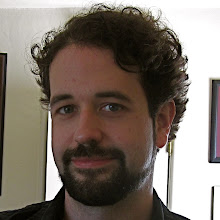The first chapter of Stage 3 -- developing a learning plan -- was a massive barrage of new content spread over 35 pages (which is a lot when you're talking about information-dense textbook reading). I'm still assimilating it all, and I think it may be a while before I feel like I'm actually "getting" everything in here. As I've noted before, straight reading is not my most efficient means of taking in new information, and there was enough here to make my eyes cross.
The basic concept is that a lesson plan should be designed with seven criteria or stages in mind, represented by the acronym WHERETO:
W = Where is the content headed? Where are the students coming from?
H = Hooking the students: how do we get them engaged with the material? How do we hold onto them once we've got them?
E = Explore and Experience, Enable and Equip: Students need to have experiences that will help them explore the Big Ideas of the unit. We also need to Equip them with the tools they'll need to perform well in the assessments and demonstrate understanding of the material.
R = Revise and Reflect: Return to the same questions and problems again and again. Challenge initial assumptions. Make the students think again about their first instincts, and see how their inferences change in the light of new knowledge. This mirrors what Howard Gardner said about "going deep": you have to stay with a topic long enough to get down to the student's essential misconceptions and dispel them before new understanding can take root.
E = Evaluate work and progress: This refers to letting the students evaluate their progress, not just the teacher. These is where strategies like the "1-minute essay" become invaluable. Give the students opportunities for constant reflection.
T = Tailor and personalize the work: I really, really appreciate what the authors say about this one -- namely, that a "diverse" student body is not merely one that is composed of minority groups. Every student body is diverse because all students come to the class with different strengths, weaknesses, prior knowledge, learning styles, interests, and preferences. (The use of "diverse" as a euphemism to describe members of racial minorities has always struck me as deeply offensive for this very reason.) It's important to keep pursuing the same Goals and Desired Results while making room for students to explore the content in different ways, as befits their strengths.
O = Organize for optimal effectiveness: It's important to present the material in a way that will generate the most interest and maintain that interest throughout the unit. Marching in a straight line through the content is bad for understanding on several levels -- it lowers interest in the material, which causes students to disengage, and also prevents students from going back to Reflect and Evaluate on previous content. I particularly liked the analogy here to soccer training: teach discrete skills, then build up to more sophisticated drills, then "play the game" (which would probably equate to the Performance Task Assessment we constructed in the last chapter).
In between pulling my focus back to the material of the chapter -- did I mention this was a LOT of reading? -- I've been brainstorming about "hooks" to get the students engaged early. That, in turn, has led me back to the xenobiology theme that I came up with earlier in the design process. What if, instead of just making the xenobiology presentation the big end-of-the-year class project, I build that concept of exploring an alien world into many of the projects throughout the year? I could present the students with "messages" and "log entries" from the captain of a new colony mission that has landed on an alien world; the colonists are running into various problems with the local flora and fauna, and the captain has turned to his team of xenobiologists (the students) to figure out what's going wrong and how to fix it. Our class can then turn to considering different real-world situations and extracting the necessary Understandings to make sense of the problems being faced by the space colonists.
This suggests a structure for the overall unit: Begin by explaining the role that the students are playing and presenting a message from the captain, describing a mysterious problem with the local ecology and asking for their help. I can start out with a pre-assessment where the students guess at possible causes of the problem, which should reveal which ones have some prior understanding of ecology. We can then return to the colonists' dilemma throughout the unit as we uncover new understandings and new knowledge; through written responses and class discussions, the students can refine their previous thinking about the situation, until they finally arrive at the actual cause and a recommended solution at the unit's end. The two subsequent units can feature similar biological "mysteries" for the students to solve in the areas of homeostasis and evolution.
I think this will be a fun hook for the students; the idea of learning from Earth's biology to answer questions about an alien world inherently embodies the idea of "transfer", which is one of the true marks of understanding. It also creates a theme that I can draw on in activities and assessments throughout the rest of the unit.
Subscribe to:
Post Comments (Atom)

No comments:
Post a Comment